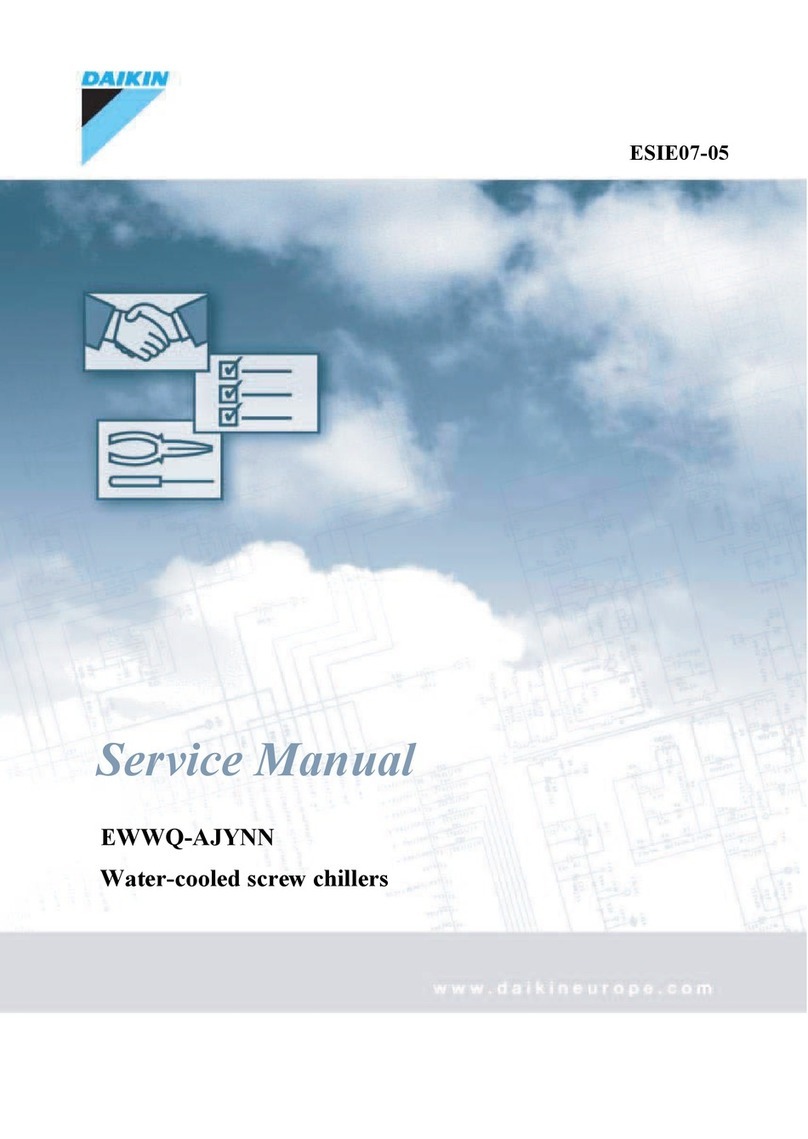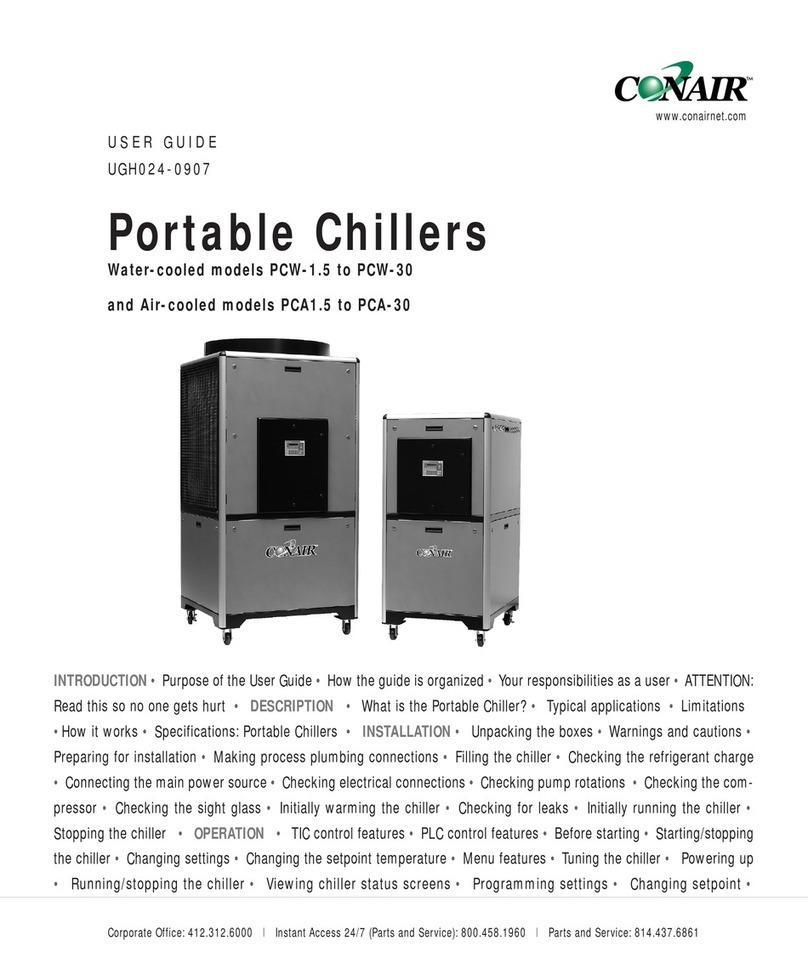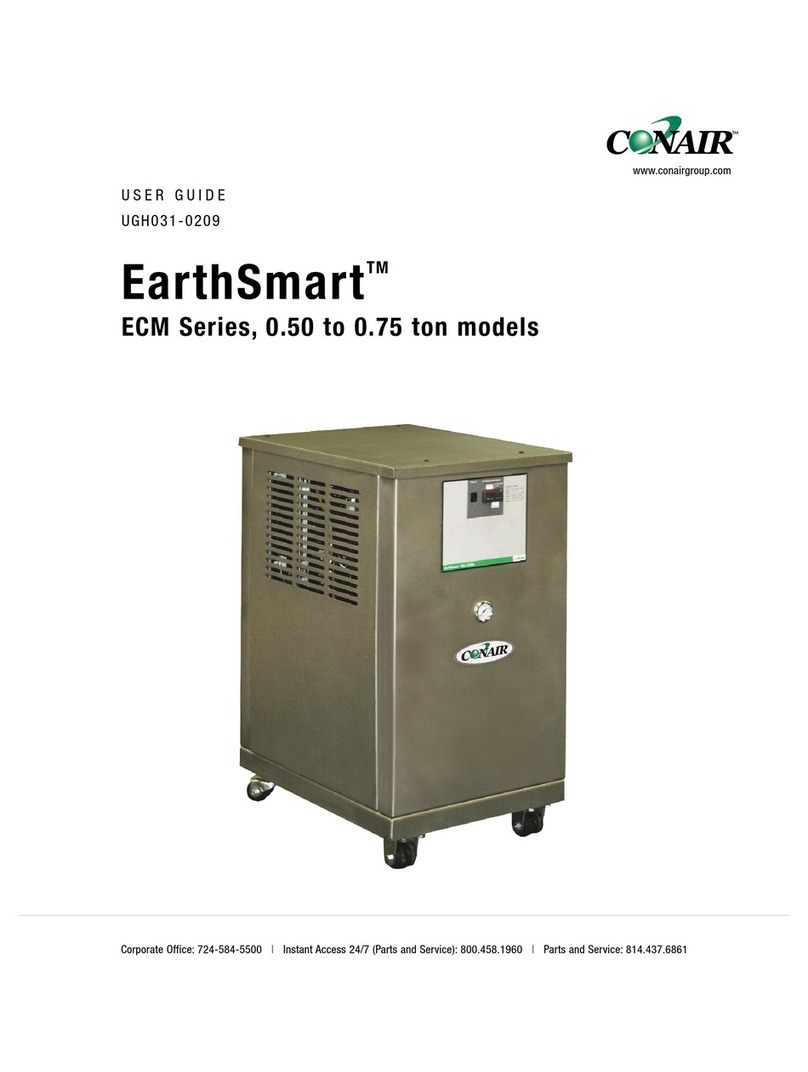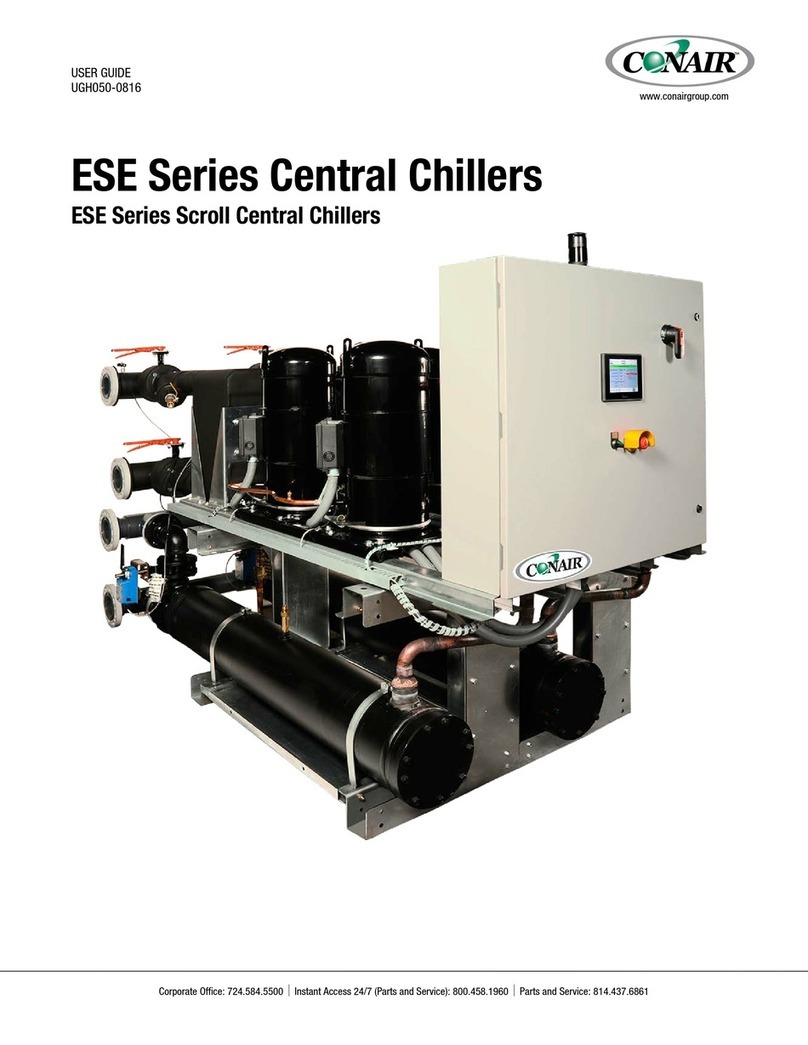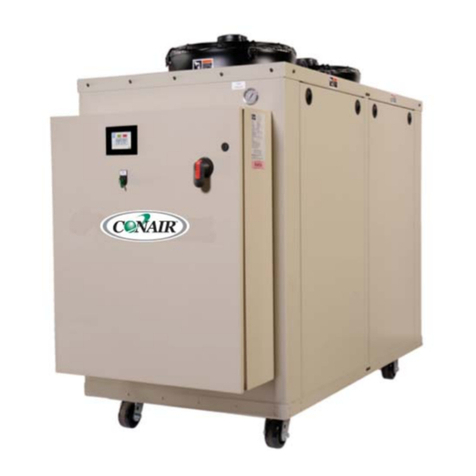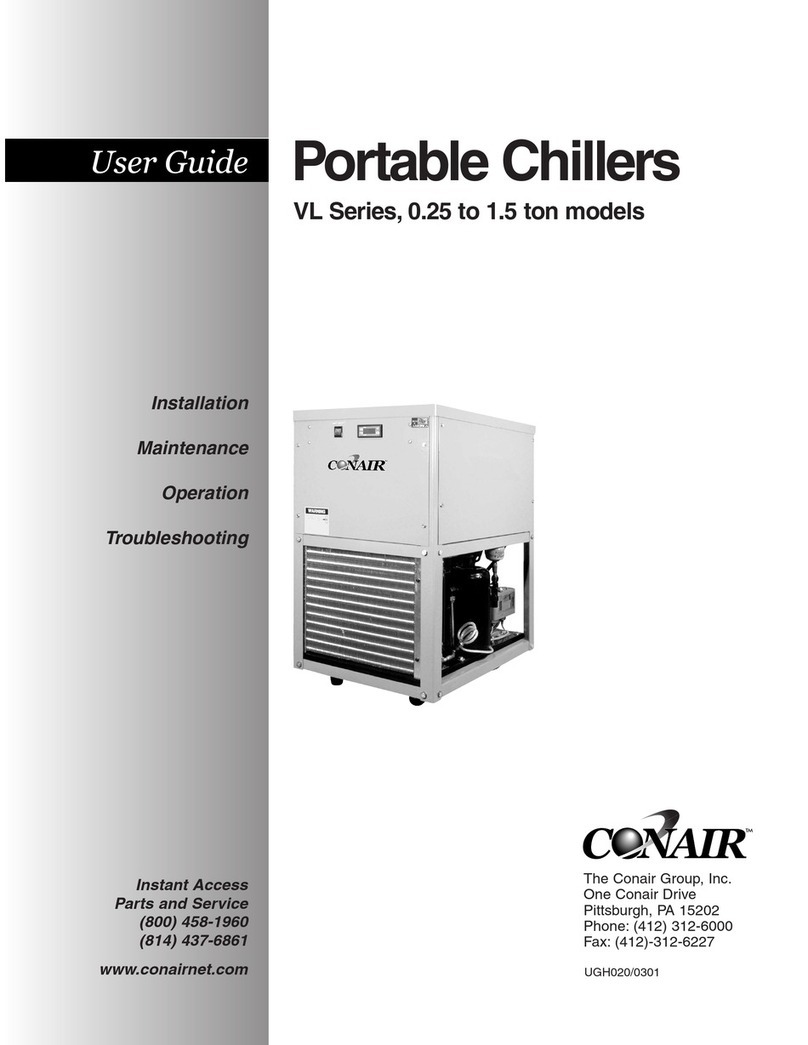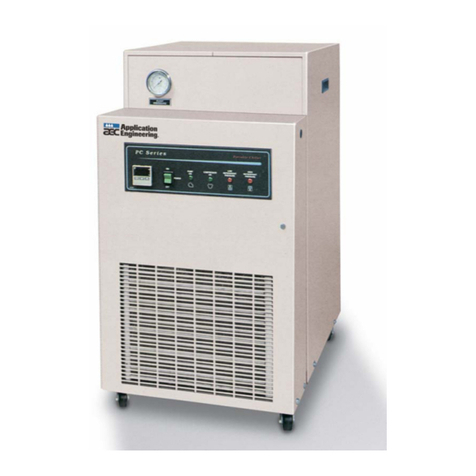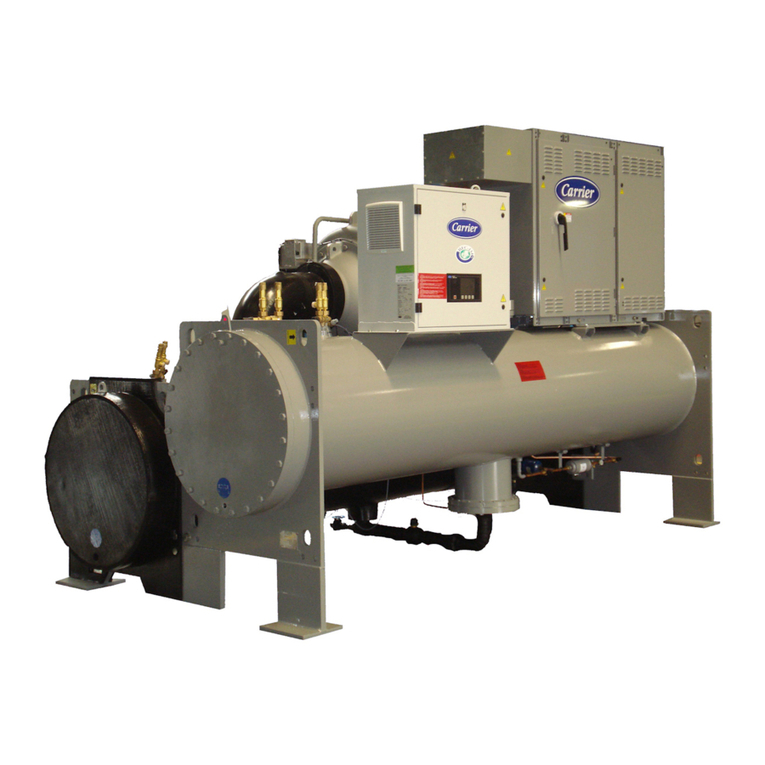UGH004/0999 microKool Portable Chillers
TABLE OF
CONTENTS
INTRODUCTION . . . . . . . . . . . . . . . . . . .1-1
Purpose of the User Guide . . . . . . . . . . . . . . . . . . . . . . . . .1-2
How the guide is organized . . . . . . . . . . . . . . . . . . . . . . . .1-2
Your responsibility as a user . . . . . . . . . . . . . . . . . . . . . . .1-2
ATTENTION: Read this so no one gets hurt . . . . . . . . . . .1-3
DESCRIPTION . . . . . . . . . . . . . . . . . . . .2-1
What is the microKool chiller? . . . . . . . . . . . . . . . . . . . . . .2-2
Typical applications . . . . . . . . . . . . . . . . . . . . . . . . . . . . . .2-2
How it works: Water-Cooled . . . . . . . . . . . . . . . . . . . . . . .2-3
How it works: Air-Cooled . . . . . . . . . . . . . . . . . . . . . . . . .2-4
Features . . . . . . . . . . . . . . . . . . . . . . . . . . . . . . . . . . . . . . .2-5
Specifications: Water-Cooled . . . . . . . . . . . . . . . . . . . . . . .2-6
Specifications: Air Cooled . . . . . . . . . . . . . . . . . . . . . . . . .2-7
Freeze protection requirements . . . . . . . . . . . . . . . . . . . . .2-8
INSTALLATION . . . . . . . . . . . . . . . . . . . .3-1
Unpacking the boxes . . . . . . . . . . . . . . . . . . . . . . . . . . . . .3-2
Preparing for installation . . . . . . . . . . . . . . . . . . . . . . . . . .3-3
Connecting the proces and water supply lines . . . . . . . . . . .3-4
Connecting the main power . . . . . . . . . . . . . . . . . . . . . . . .3-5
Testing the installation . . . . . . . . . . . . . . . . . . . . . . . . . . . .3-6
Entering setpoint deviation parameters . . . . . . . . . . . . . . . .3-7
Initial setup . . . . . . . . . . . . . . . . . . . . . . . . . . . . . . . . . . . .3-8
Changing temperature units . . . . . . . . . . . . . . . . . . . . . . . .3-9
Enabling and disabling passcode protection . . . . . . . . . . .3-10
Selecting the temperature control point (PC-2 control) . . . . . .3-12
Enabling the Auto Start feature (PC-2 control) . . . . . . . . . . . .3-14
Activating SPI communication . . . . . . . . . . . . . . . . . . . . .3-16
OPERATION . . . . . . . . . . . . . . . . . . . . . .4-1
PC-1 control features . . . . . . . . . . . . . . . . . . . . . . . . . . . . .4-2
PC-2 control features . . . . . . . . . . . . . . . . . . . . . . . . . . . . .4-3
Positioning the control panel . . . . . . . . . . . . . . . . . . . . . . .4-4
Starting the chiller . . . . . . . . . . . . . . . . . . . . . . . . . . . . . . .4-5
Entering passcodes . . . . . . . . . . . . . . . . . . . . . . . . . . . . . . .4-6
Stopping the chiller . . . . . . . . . . . . . . . . . . . . . . . . . . . . . .4-7
Using the pumpdown feature (PC-2 control) . . . . . . . . . . . . . .4-9
Performing an Auto Tune . . . . . . . . . . . . . . . . . . . . . . . . .4-10
MAINTENANCE . . . . . . . . . . . . . . . . . . . .5-1
Preventative maintenance schedule . . . . . . . . . . . . . . . . . . .5-2
Cleaning evaporators . . . . . . . . . . . . . . . . . . . . . . . . . . . . .5-4
Cleaning condensers . . . . . . . . . . . . . . . . . . . . . . . . . . . . .5-4
Refilling the tank. . . . . . . . . . . . . . . . . . . . . . . . . . . . . . .5-5
Checking refrigerant charge . . . . . . . . . . . . . . . . . . . . . . . .5-6
i





